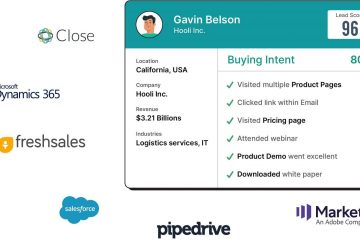B2B Customer Journey – Tracking In Privacy-Focused World
To say B2B customer journeys are complex and lengthy would be putting it lightly. Marketing leaders around the world admit that it’s difficult to track B2B customers.
B2C journeys have a few touchpoints, involve a single-decision maker, and happen quickly. And, not a lot of research and considerations of alternatives happen here.
On the contrary, B2B customer journeys are lengthy. Customers reported that they conduct 12 searches on average before interacting with any brand’s website. Research and consideration are paid a lot of importance. A B2B customer is more than 50% down the sales path before they interact with a brand’s website. Customers even consider a brand’s social media presence. In essence, the majority of the customer journey takes place before a customer even reaches your website.
Overwhelming, isn’t it? Don’t worry! With this article, you will understand the B2B customer journey and learn how to track B2B customers effectively with the help of powerful tips from B2B marketing and growth leaders.
What is a B2B Customer Journey?
The path that a B2B customer takes from identifying a problem to searching for a solution to being introduced to your brand and its offerings, to considering your offerings and its alternatives, and to eventually purchasing from you is defined as a B2B customer journey.
Understanding B2B customer journeys is crucial for any brand. Every deal is a high-ticket deal and adds significantly to a firm’s revenue. Losing even a single deal can impact a firm’s long-term growth significantly.
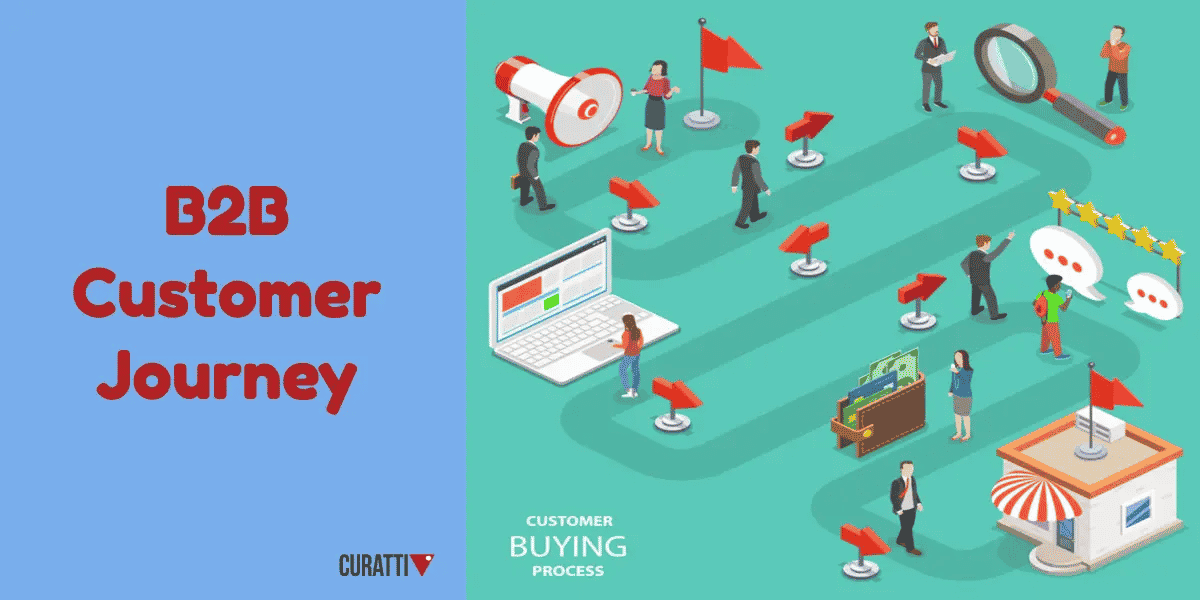
Image Source: Curatti
The two most important aspects of a B2B customer journey are the multiple decision-makers and touchpoints spread wide across multiple channels.
Consider everything from a customer’s perspective. You have a big budget for a solution to be used across your organization.
You will check a vendor’s blogs, website, pricing, check customer reviews on multiple platforms, their social media presence, what their executives post about, and research extensively about the product. For example, are they compliant with data regulations in your country?
At the same time, as the solution would be used organization-wide, you want every team to check if the solution works for them. So all these decision-makers will go through the research process.
Only when everyone is convinced that the solution works for them, only then would the purchase fall through.
What are the Stages of a B2B Customer Journey?
A B2B customer journey can be divided into 5 functional stages. Each stage moves a B2B customer down the sales funnel, to eventually becoming a brand advocate.
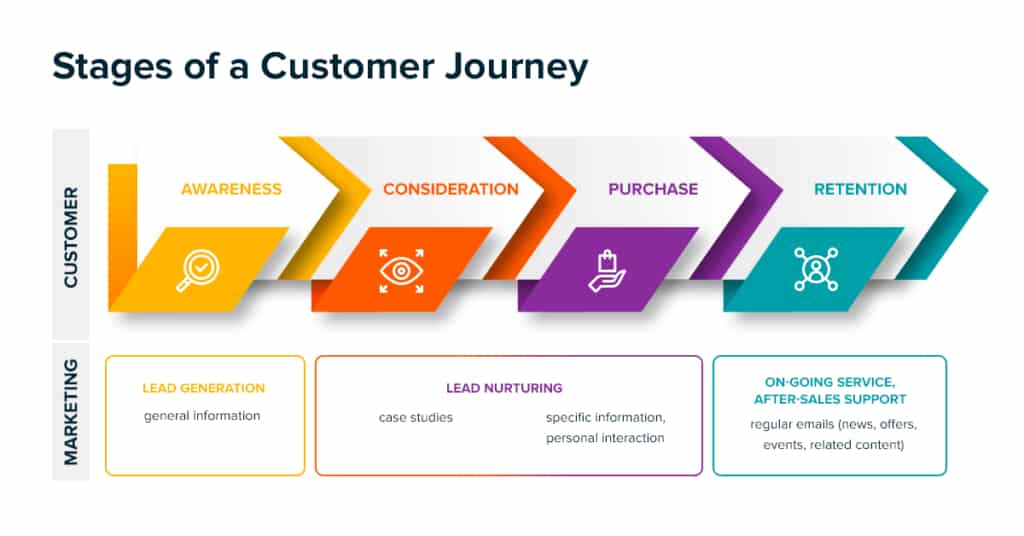
Image Source: promx.net
Awareness
When a B2B customer runs into a problem, they research a solution. This is how they end up on your blog articles, whitepapers, educational content, videos, free eBooks, etc. Thus, a B2B customer is introduced to your brand. Or, if they are not inbound, they might have simply found you through your social media or read a few outreach emails from you.
Mapping this stage of the customer journey allows you to gain insights into how effective your marketing is. You can keep track of all the touchpoints that a customer interacts with or comes across and use marketing attribution to improve your marketing.
Consideration
Also during this stage, the customer will try to learn about your brand and your offerings. This is with an objective to gauge your expertise and reliability in terms of what value and solutions you’re offering.
A customer may go through your blog, ask for a sales consultation, demo, sign up for a free trial, etc. to understand the value you provide. There will be further consultations with your sales and technical team to see if they can have the product customized to their specific requirements.
At the end of this stage, the customer has shortlisted who they deem to be expert solution providers for their requirements. Now they compare and weigh options against each other.
Conversion
At this stage, the B2B customer is convinced of your expertise and considers your solution to be the best fit for their requirement. The purchase falls through and the solution is deployed and implemented by the customer.
After all the purchase processes have been completed, the product is delivered at the earliest. After delivery, you will need to assist your customer with the deployment of the product and onboarding of the product users.
Loyalty
Retaining a customer is more profitable than acquiring a new one. So, at this stage, the focus is to gather unfiltered customer feedback and use it for improving your offerings, rewarding loyalty, building and strengthening long-term relationships, etc.
Once the product or service is deployed, the customer will start using it. During the initial stages of the customer using the product, he will encounter minor issues, bugs, or difficulties in the operations. The feedback is assessed and the appropriate assistance is provided to the customer to ensure the product works as they need it to. A satisfied customer is likely to stay loyal.
Advocacy
A happy customer is the best brand advocate. If you get the preceding step right, you will create a lot of happy customers. You can turn these happy customers into brand advocates and have them tell others about their positive experiences with you.
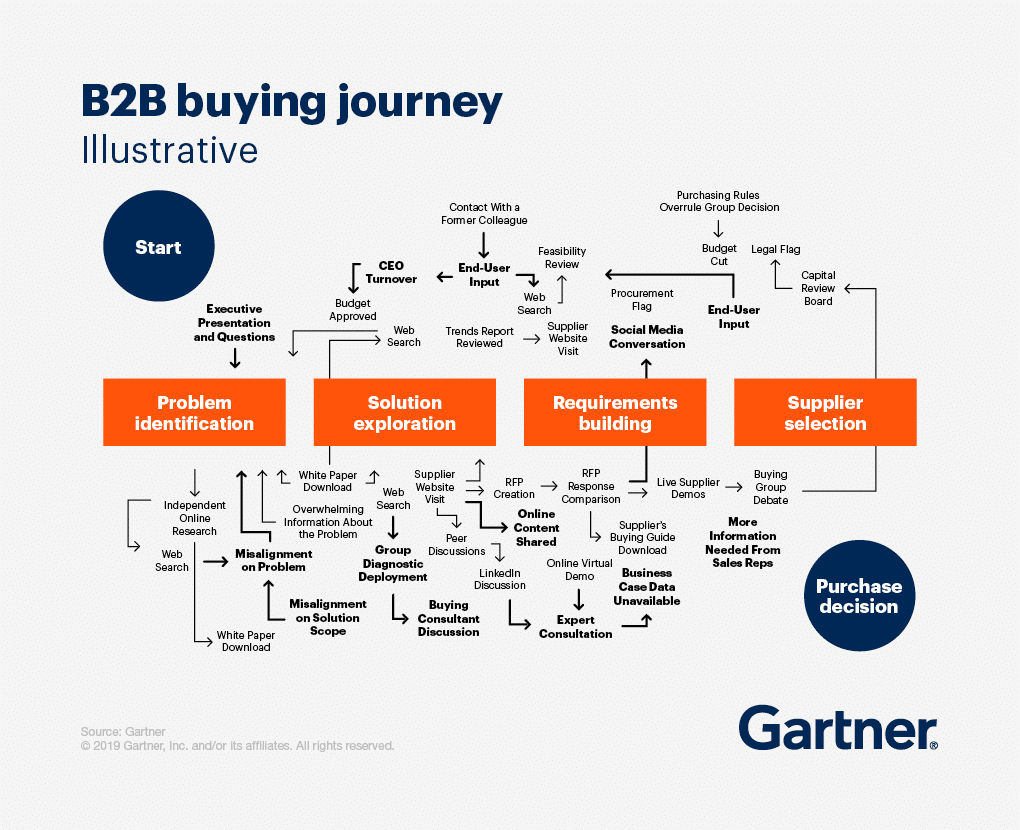
Source: Gartner
Challenges in B2B Customer Journey Tracking
We had mentioned initially that customer journey tracking for B2B businesses is complex. Let’s break them down!
Length
The B2C customer journeys are short and only involve a few steps. The customer usually checks the product, and its reviews, and decides if they would like to make a purchase. Sometimes it’s instantaneous, other times it takes a few days. That is not the case with B2B!
According to the latest surveys, an average B2B sales cycle lasts 4 to 8 months. This in itself is a challenge. B2B solutions are high-ticket items and are often considered a capital investment. A B2B customer leaves no stones unturned in finding the best fit.
Sometimes, leads may even go cold for months due to bureaucratic delays, intensive research by each decision-maker, or negotiating with other alternatives.
Multiple Decision Makers
The B2C customer journey will usually involve a single decision-maker. The decision-maker will finalize the purchase based on the experience he has along his journey. Again, this is not the case in B2B sales.
A solution that will be used organization-wide will indeed require clearance from all decision-makers. How many you ask? An average B2B sales cycle involves six to ten decision-makers.
Each decision-maker will conduct research, try the solution and then convey their inputs. Only when everyone agrees does the purchase happen.
Omnichannel Touchpoints
The math is clear. Multiple decision-makers, a long sales cycle, and the need to conduct a thorough assessment, considering social media presence and outreach, all add up to a staggering number of touchpoints in a single B2B customer journey.
Your prospect engages with you through several mediums. Sales reps, website content, social media, etc. Even offline touchpoints exist like referrals, here-say, asking connections for reviews, etc. Tracking and monitoring each touchpoint becomes difficult.
Journey Complexities
You can have journeys of multiple decision-makers overlapping, running in parallel, or showcasing a completely random pattern. The length and omnichannel touchpoints only amplify the level of complexity.
You not only have to track each individual decision-makers journey but also need to try to make sense of the whole customer journey in itself.
Privacy Concerns
The majority of internet users simply do not want to be tracked. Data and online privacy concerns are now taken more seriously than ever and laws such as GDPR and CCPA safeguard a user’s data and online privacy rights.
Tracking a customer and their journey has now become a very complex subject. This became clear with Google’s sunsetting of Google Analytics and pivoting to Google Analytics 4. And, Google Analytics and tools using similar tracking strategies have also become illegal in several countries like France and Italy.
In order to track customer journeys, you need to use the right tools and follow the right protocols to complete your objectives without violating data laws.
Now you know about the basics of B2B customer journey tracking and the challenges therein. Let’s now talk about how you can set up customer journey tracking for B2B.
Setting up real-time Customer Journey Tracking
We will divide the tracking setup into two steps: pre-purchase and post-purchase.
Pre-Purchase
The pre-purchase section involves the awareness and consideration stages of the B2B Customer Journey. These are two crucial stages as the final conversion depends heavily on how effective these stages are.
Real-time Customer Journey Tracking has a lot of benefits. The most important one is that it allows you to manage customer journey experiences. With customer-centric firms being 60% more profitable than others, a good customer experience is important.
We can divide the Pre-Purchase section further into two parts:
On-Website Tracking
As the name suggests, on-website tracking means tracking the activities and behavior of a lead while they are on your website. On-website tracking is your most powerful asset as the data is completely within your control. You can analyze customer behavior to understand buying intent and qualify leads.
With on-website tracking, you have a higher degree of control. You can track forms and live chats for engagement and data useful for lead qualification and scoring.
Not so subtle plug! If you are looking for a tool to get a complete grip of first-party data with 360-degree customer journey tracking, try out Salespanel. Our tool helps you track every customer interaction on your website in real-time and use the information to generate web analytics, score leads, and personalize content.
Off-Website Tracking
As mentioned earlier, a huge portion of the customer journey takes place outside of the vendor’s website. Sadly, you cannot monitor the customer journey as effectively as on your website.
However, you can still track the customer, even though the data generated is relatively basic compared to on-website tracking. How can you do so? Using UTM codes.
Using UTM codes, you can identify the source, medium, campaign, and other referrer details. So, if a customer is landing from a particular ad or social media post or a newsletter, you can track the engagement. This becomes part of the entire customer journey. There are also tools to track third-party engagement but that would be the topic of discussion for another day.
Post-Purchase
The customer journey continues even after they make a purchase. As we mentioned earlier, retaining an existing customer is crucial for predictable revenue growth.
The best part is that you have an easy time upselling or crossing selling solutions to an existing client as you already have established trust.
The key here is to build a lasting relationship by regularly engaging with the clients. You can even set triggers for when a customer hasn’t been active in a long time.
Emails, newsletters, direct engagement, events, etc. are the ways you can keep client engagement high post-sale. With this, you can keep tabs on their activities properly.
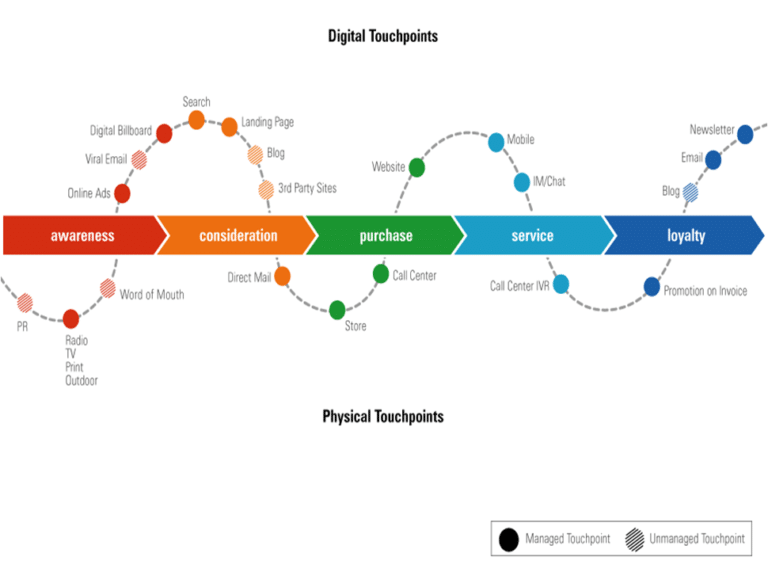
Source: inmoment.com
Bonus Point – Appropriate Data Usage and Adhering to Data Laws
Data usage and online privacy are big concerns for all internet users. With 78% of the users taking data and online privacy seriously, even businesses should.
Laws such as GDPR, CCPA, and others safeguard the rights of internet users concerning their data and privacy.
Adhering to such laws will make your audience feel safe dealing with you. Customer journey tracking is a sensitive spot when it comes to GDPR and other data laws. If your tracking software is under the jurisdiction of the United States and is bound by the CLOUD act, for example, it can be deemed illegal in several European countries. How you acquire and process customer data would be a key problem to solve. Plus, Google and Apple are ditching third-party cookies. That would mean Safari and Chrome users can’t be tracked through cookies. This is another key challenge to keep in mind before establishing a customer journey tracking solution.
Closing Thoughts
B2B customer journey tracking is a powerful tool. With a focus on customer journey tracking by Google itself, it has become pretty evident that the future of web analytics and tracking relies on customer journey tracking. This is especially the case for B2B businesses that have complex sophisticated journeys to track.
In this scenario, a proper customer journey tracking setup becomes your biggest weapon. If you want to try out a real-time journey tracking software that offers single customer view, try out Salespanel!
Sell more, understand your customers’ journey for free!
Sales and Marketing teams spend millions of dollars to bring visitors to your website. But do you track your customer’s journey? Do you know who buys and why?
Around 8% of your website traffic will sign up on your lead forms. What happens to the other 92% of your traffic? Can you identify your visiting accounts? Can you engage and retarget your qualified visitors even if they are not identified?
